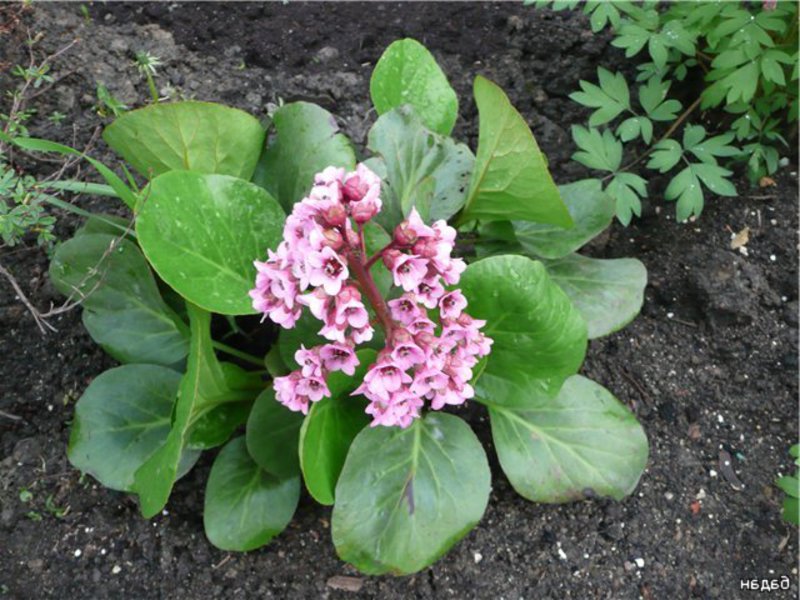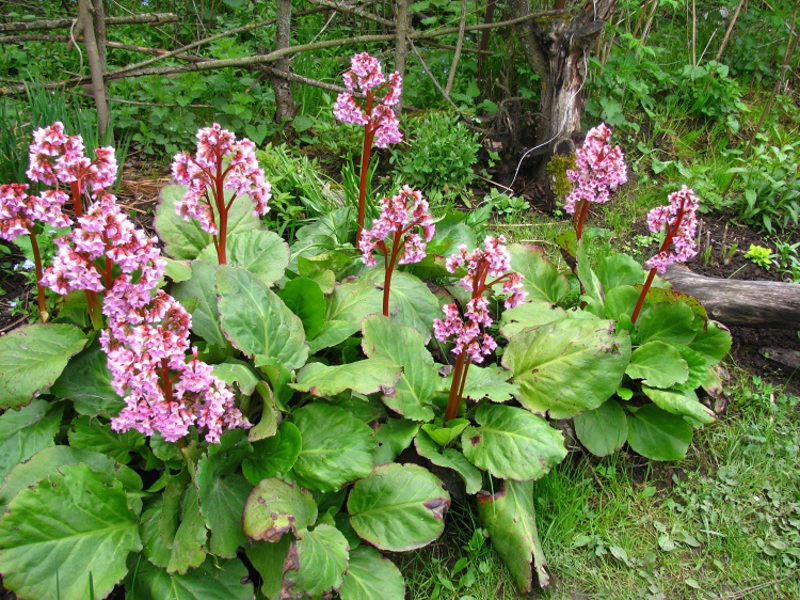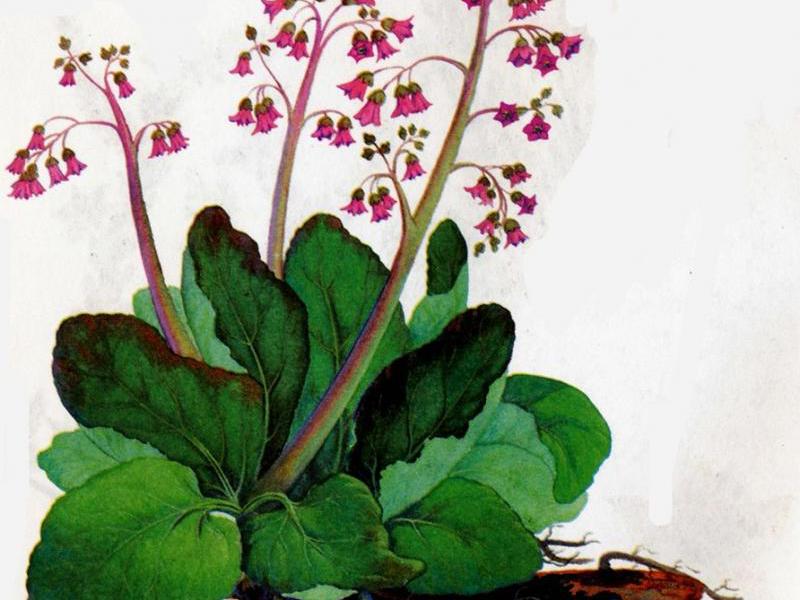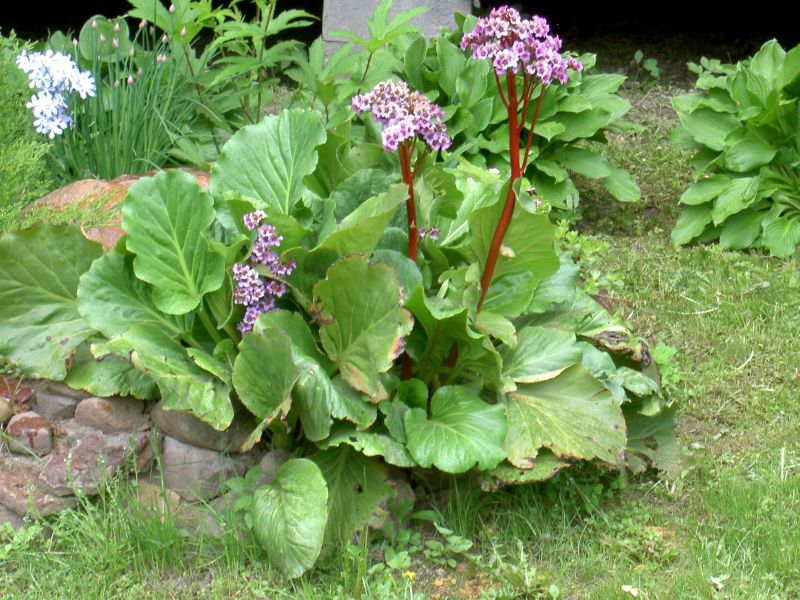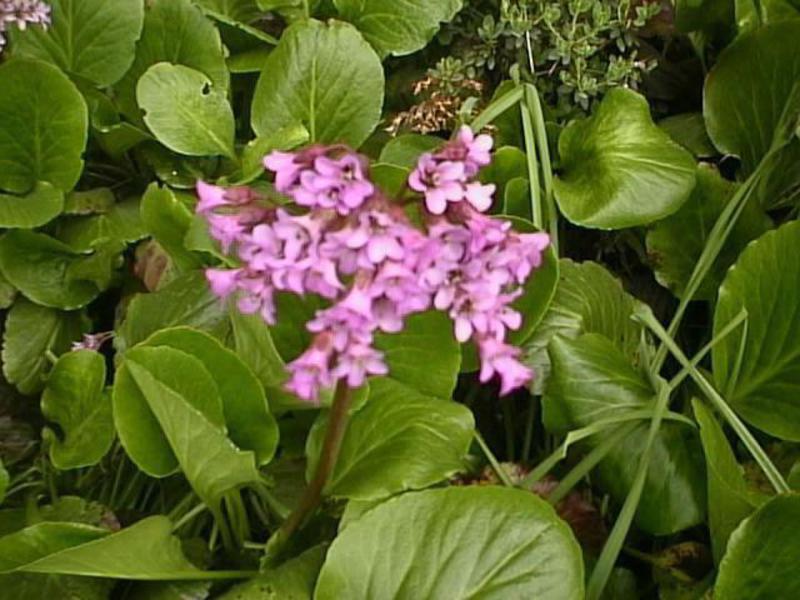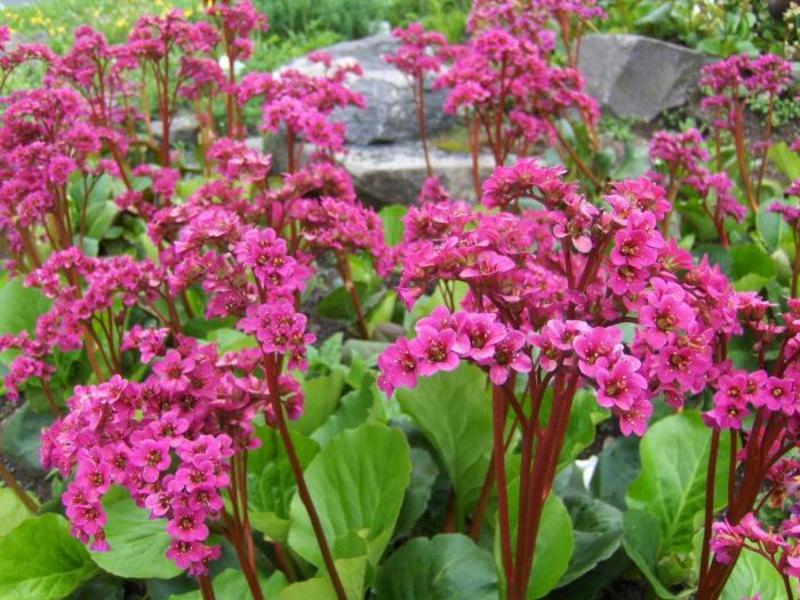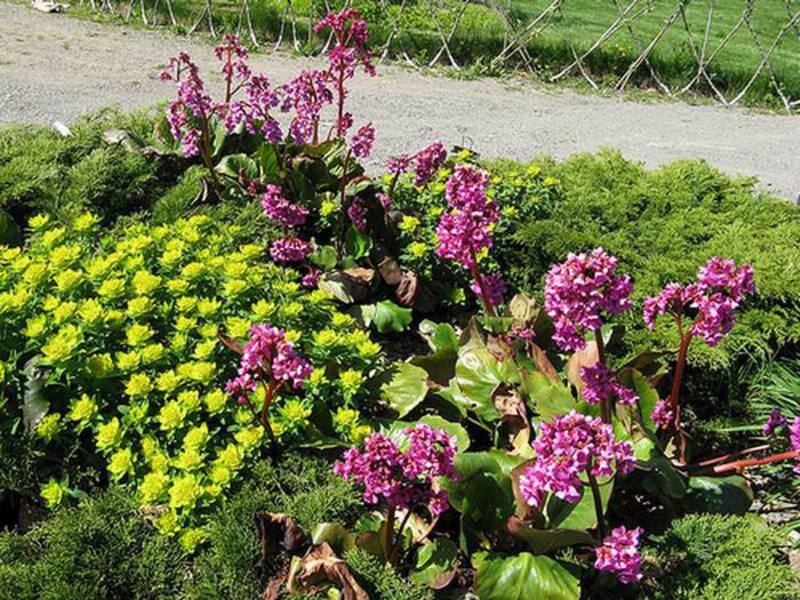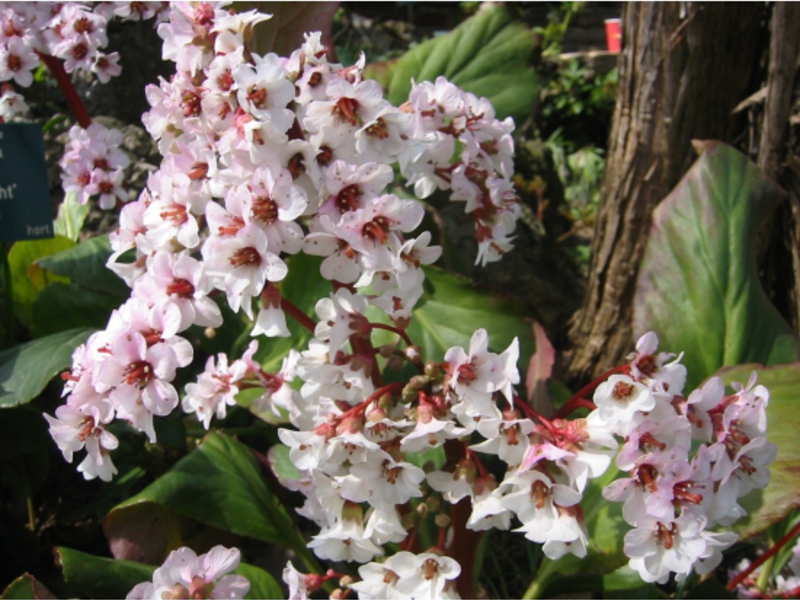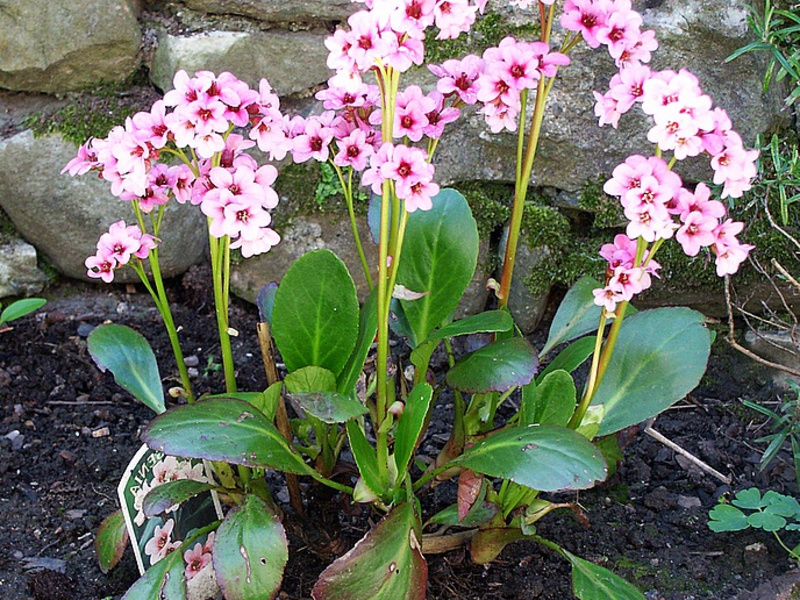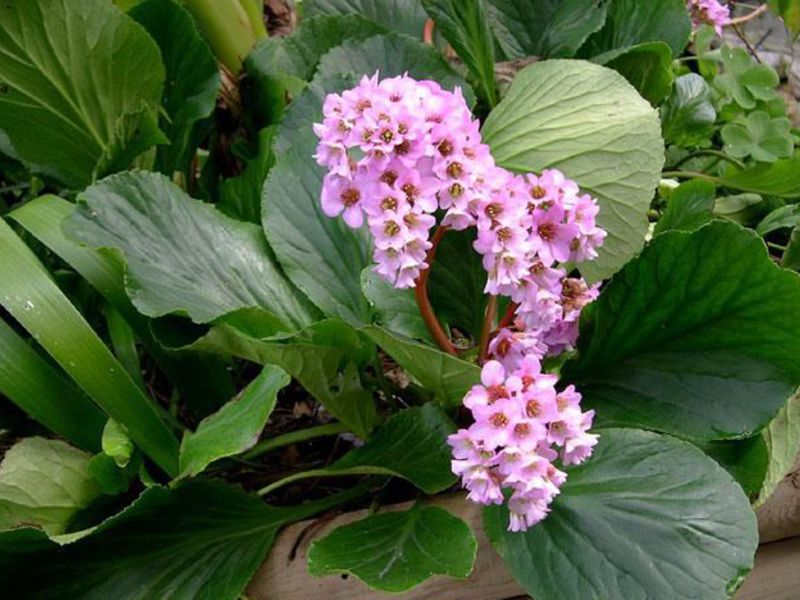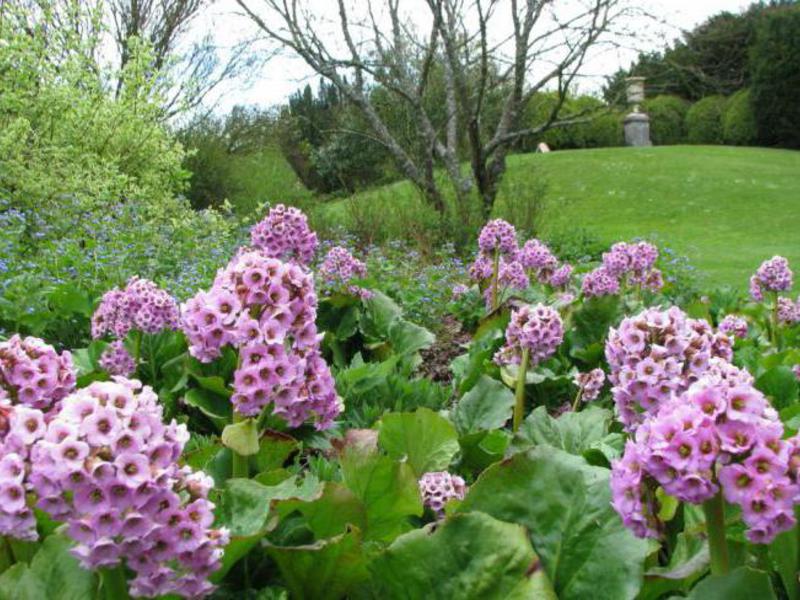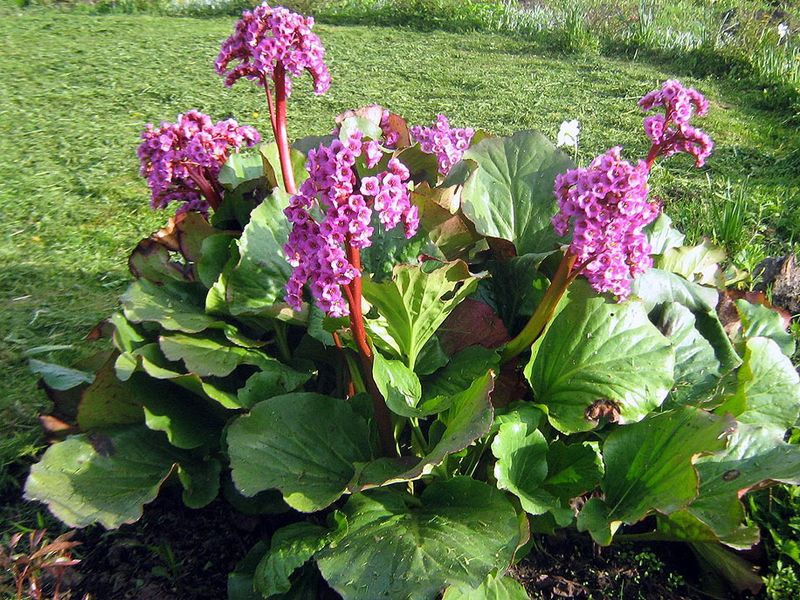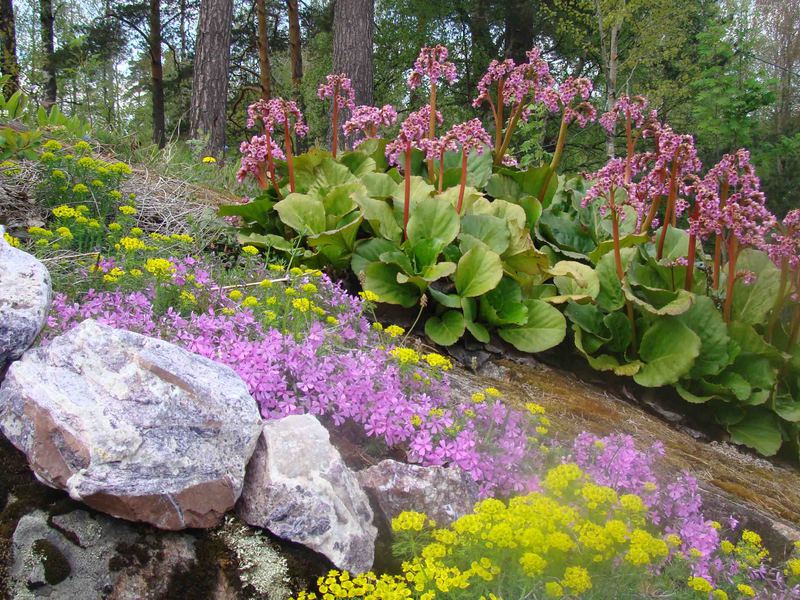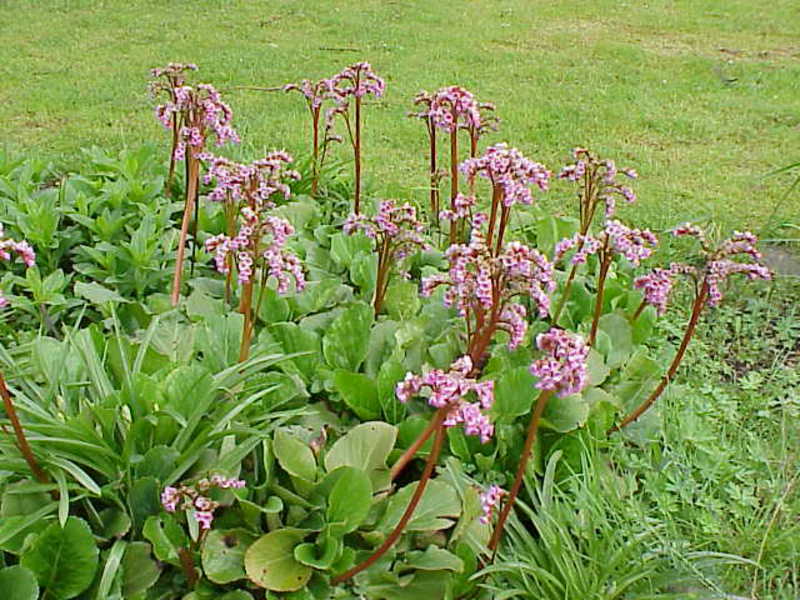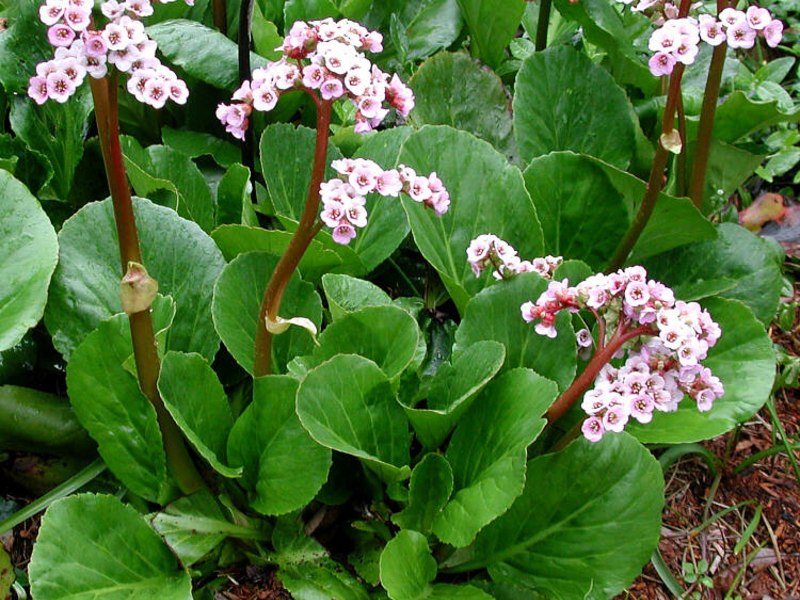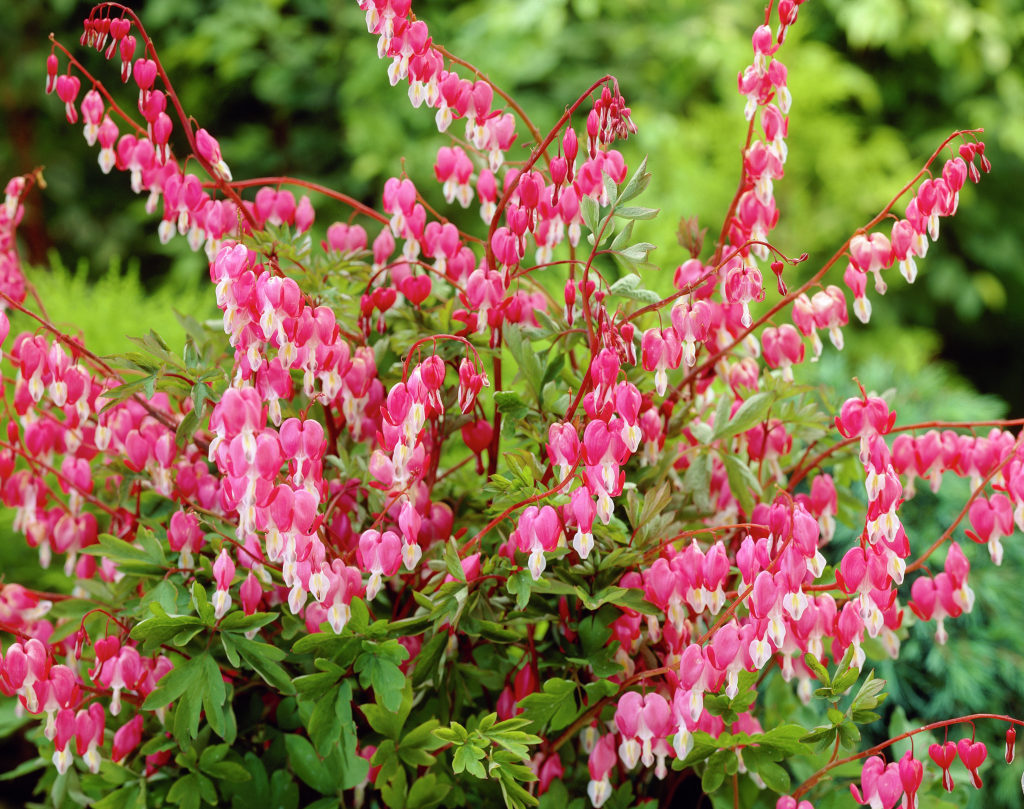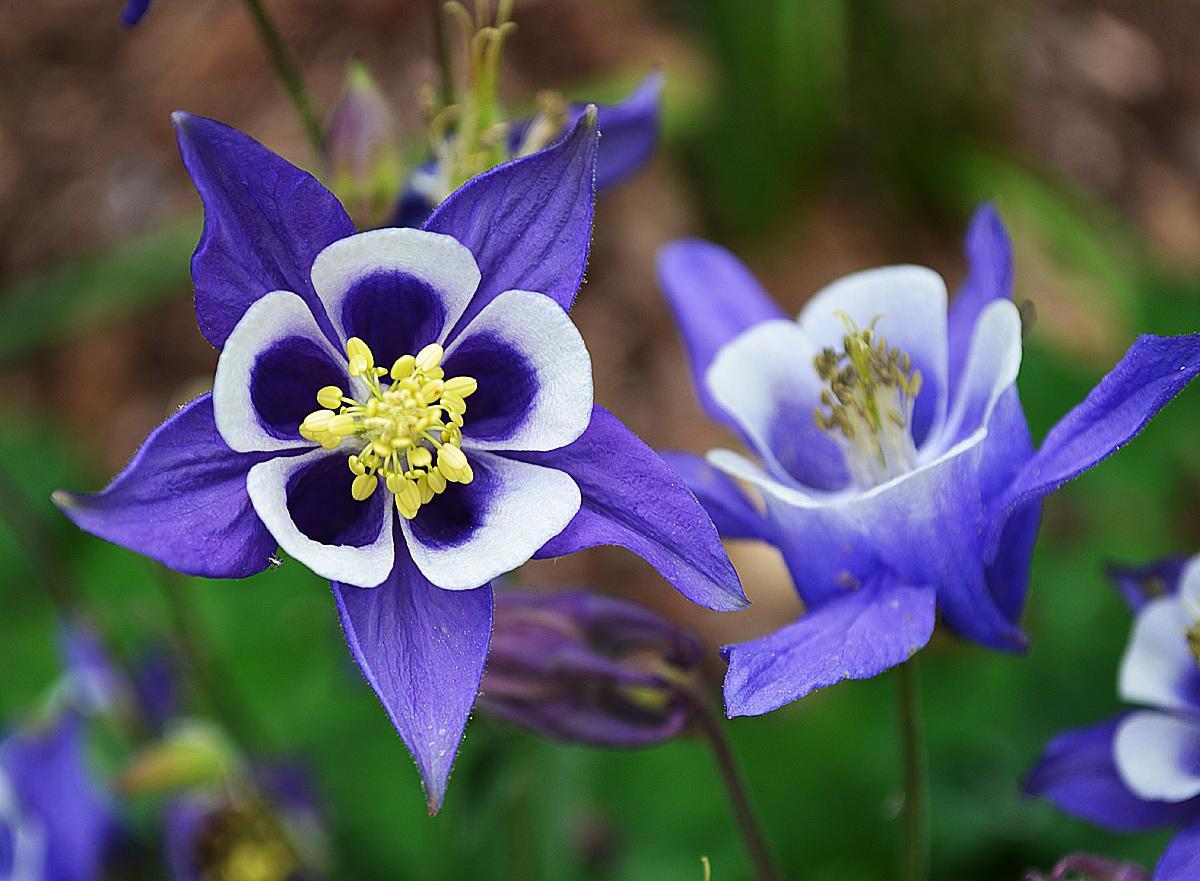The perennial badan plant is ideal for decorating garden plots in a natural style. Its ornamental dark green leaves and pink flowers will brighten the garden from early spring to late autumn. In addition, the flower has medicinal properties and is widely used in folk medicine. It is difficult to find a plant that is more unpretentious in planting, care and reproduction. Even a novice gardener can grow badan on his site.
Description, types and photos of badan
This herbaceous plant is unusually beautiful. belongs to the family of saxifrage and is famous for its bright inflorescences. Collected in a root rosette, large shiny berry leaves resemble the ears of an elephant. That is why the people often call it "elephant ears". One inflorescence of a plant can have more than 100 flowers, each of which has a diameter of 2 cm.
There are 10 types of badan in nature. Among them, the three most popular are the three most commonly used. for decorating garden plots.
 Big-leaved badan is the most common and favorite plant species of gardeners, reaching a height of 50 cm. It is distinguished by light green shiny leaves that frame dark pink inflorescences. With the onset of autumn, the leaves of the thick-leaved bergenia change their color to red-brown.
Big-leaved badan is the most common and favorite plant species of gardeners, reaching a height of 50 cm. It is distinguished by light green shiny leaves that frame dark pink inflorescences. With the onset of autumn, the leaves of the thick-leaved bergenia change their color to red-brown.- Badan heart-leaved, depending on the variety and growing conditions, can grow from 20 to 40 cm.It got its name because of the heart-shaped leaves that frame the inflorescences of purple, lilac or white.
- Badan pacific has rounded large leaves, the diameter of which is 20 cm.The plant blooms with delicate lilac bright flowers.
Blooming of all types of badans lasts about a month... The plant grows rhizomes annually, and therefore grows well, as if "crawling" over the site.
Badan: planting and care in the open field
This shade-tolerant winter-hardy plant grows well not only in bright areas, but also in partial shade and shade. However, the plant does not bloom in full shade, and grows poorly in an open sunny space.
Experienced gardeners recommend planting a badan flower from the north, north-east or north-west side of the rocky area.
Landing features
You should know that badan does not tolerate transplants... The conditions for its growth should be as close to natural as possible. Only in this case will the plant grow well and retain its healing properties.
Requirements for the soil for badan:
- sod land is considered the best substrate for flower growth, instead of which you can use a mixture consisting of loamy soil, compost and sand;
- if there is loamy soil on the site, then it is recommended to dilute it with sand and gravel;
- the plant does not tolerate stagnant water, so the soil for it must be well drained.
Planting is best done in spring, but you can also do it in early August. Having prepared the soil for badan, you will need to dig spacious holes no more than 30 cm deep. Then the rhizomes are placed in them and carefully sprinkled with earth. The plant is watered.
To do not damage fragile roots, the hole can first be filled with water, then put rhizomes in it and cover with soil.In this case, the plant will need to be watered only after a week.
Care
Grow in one place badan maybe about ten years... It does not require constant transplants to a new site. It does not require a flower and special care, but it is still necessary to take into account some of the nuances.
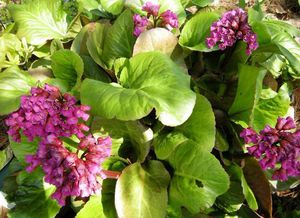 The plant needs regular, timely watering. In this case, it is necessary to ensure that there is no stagnation of water in the soil.
The plant needs regular, timely watering. In this case, it is necessary to ensure that there is no stagnation of water in the soil.- In spring, shoots that are too long are shortened, and the plant itself is cleared of old foliage.
- The soil around the flower needs to be loosened periodically. This procedure will help to avoid overheating and drying out of the soil.
- Before and after flowering, bergenia is fed with complex mineral fertilizers.
- A few weeks after flowering, new rosettes begin to form, and the maturation of leaves is activated, which begin to change their green color to burgundy. At this time, it is recommended to feed the plant with Kemira-Kombi mineral fertilizer.
Propagation of badan
The plant reproduces in two ways:
- dividing the bush;
- seeds.
Dividing the bush
This method of reproduction is not very difficult, therefore, even novice gardeners can do it.
You can divide the bush in May-June... This should be done so as not to damage the main rhizome. It will not be difficult to dig up new roots as they are close to the soil surface. Each individual root should have at least two to three leaves and three root buds.
For pits, holes are prepared in advance with a depth of 10-15 cm. The distance between the plants should be about 30-50 cm. Since the berry grows well in breadth, and not up, you do not need to save space.
For the plant to bloom next spring, the cut should be planted vertically. In this case, the leaf outlet should protrude slightly above the ground.
For a faster receipt of new planting material, the bushes sit with a slope. Usually, cuttings of shrubs are rooted in this way. In this case, the plant will grow faster and give new shoots.
After planting land well watered and sprinkled with mulch... Caring for young plants consists in timely watering, loosening the soil and removing weeds.
Seed propagation
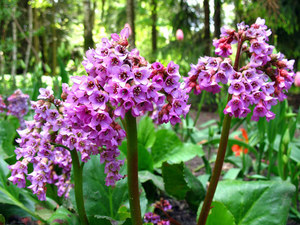 This is a rather lengthy process, so you need to be patient.
This is a rather lengthy process, so you need to be patient.
Sowing is best done in March. First, you need to prepare the container and fill it with earth. The grooves 0.5 cm deep should be at a distance of 3 cm from each other. In the grooves spilled with warm water, rather small berry seeds are sown.
At a room temperature of at least + 20C, the seedlings emerge in about three weeks. They develop very slowly, while forming very small rosettes. Caring for them is timely watering.
Seedlings can be planted in the garden at the beginning of June. Wells are recommended to be located staggered 40x40 cm... At the bottom of each hole, the depth of which should be about 6 cm, sand is poured and seedlings are placed. From above, the seedlings are sprinkled with an earthen mixture, which consists of loamy soil, humus and sand in equal parts.
For wintering, seedlings go very small. They can have only two leaves, and grow up to 2.5 cm. For the winter they need to be covered with peat or fallen leaves. Badan bloom will come only in the third or fourth year after planting.
Medicinal properties of badan
The rhizomes of the plant contain substances that are used in modern medicine. On their basis medicines are manufacturedthat possess:
 anti-inflammatory, hemostatic and bactericidal action;
anti-inflammatory, hemostatic and bactericidal action;- constrict blood vessels;
- weaken the intestinal peristalsis;
- compact the vascular system.
Medicines from the rhizomes of the plant are used for high blood pressure, sore throat, stomatitis, problems with bowel function and even some gynecological diseases.
At home, you can use a decoction of broadleaf bergenia.It is prepared from 10 grams of a plant, which is poured with 200 g of boiling water, and heated in a water bath for 30 minutes. The hot broth is filtered and cooled. It is recommended to take it three times a day, 1-2 tablespoons.
The badan planted on the garden plot will bring a kind of "zest" into the landscape design. It will look very impressive against the background of stones and water. The flower is irreplaceable in compositions with variegated and narrow-leaved plants, which include phlox, arabis, hosts. That is why it is worthwhile to start growing badan in the open field, planting and caring for which will not take much time.
